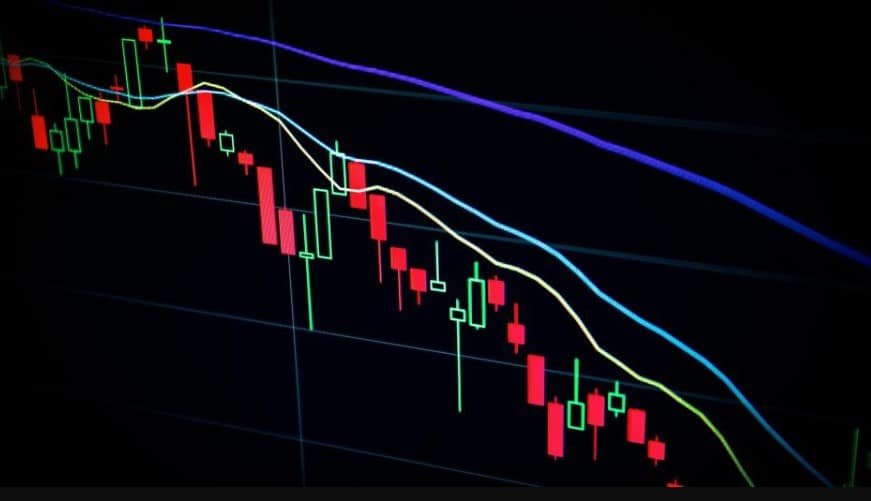Finance
Elixir of Energy: Fine-Tuned Trading Techniques for Oil Markets

The oil market, often referred to as the “black gold,” is one of the most significant and influential markets globally. It plays a pivotal role in the global economy, impacting everything from fuel prices to international geopolitics. To navigate the complex and volatile landscape of the oil market successfully, traders rely on a diverse set of techniques and strategies. In this article, we will explore the essential trading techniques for oil markets, delving deep into the subject to equip you with the knowledge needed to thrive in this lucrative yet challenging arena. For better investment you can consider this platform petro-momentum.com.
Understanding the Oil Market
Historical Context and Evolution
To understand the intricacies of oil trading, it’s crucial to recognize its historical context and evolution. Oil has been a coveted resource for centuries, with its modern industrial importance dating back to the 19th century. The oil market has since transformed from a relatively small and regional industry into a global behemoth that impacts economies worldwide.
Key Players and Stakeholders
In the contemporary oil market, several key players and stakeholders exert significant influence. These include oil-producing nations, multinational oil corporations, financial institutions, and speculators. Understanding their roles and motivations is vital to grasping the market’s dynamics.
Factors Influencing Oil Prices
Oil prices are not determined by a single factor but by a complex interplay of supply and demand dynamics, geopolitical events, economic indicators, and environmental concerns. Factors such as OPEC decisions, geopolitical tensions in oil-producing regions, and shifts in global energy policies can cause substantial price fluctuations.
Fundamental Analysis: The Foundation of Oil Trading
Analyzing Supply and Demand Dynamics
Fundamental analysis involves a meticulous examination of supply and demand factors. Traders monitor production rates, consumption trends, and inventories to gauge the balance of supply and demand. Any disruptions in supply, such as production cuts or geopolitical conflicts, can have a profound impact on prices.
Political and Geopolitical Factors
Political stability in oil-producing countries and geopolitical tensions in oil-rich regions can significantly affect oil prices. Events like sanctions, conflicts, or regime changes can disrupt supply chains and lead to price volatility.
Economic Indicators and Events
Economic indicators, such as GDP growth, inflation rates, and interest rates, have a direct impact on oil demand. Economic events like recessions or economic booms can influence the global appetite for oil, driving price fluctuations.
Technical Analysis: Charting the Path to Success
The Basics of Technical Analysis
Technical analysis involves studying historical price and volume data to predict future price movements. Traders use charts and technical indicators to identify trends, support and resistance levels, and potential entry and exit points.
Common Technical Indicators
Traders often rely on technical indicators like moving averages, RSI (Relative Strength Index), and MACD (Moving Average Convergence Divergence) to make informed decisions. These indicators provide valuable insights into market sentiment and potential reversals.
Chart Patterns and Trend Analysis
Chart patterns, such as head and shoulders, flags, and triangles, help traders identify potential trend reversals or continuations. Recognizing these patterns can be a powerful tool in oil trading.
Sentiment Analysis: Gauging Market Psychology
Role of Sentiment
Sentiment analysis focuses on understanding market psychology and the emotions driving traders’ decisions. Positive or negative sentiment can have a domino effect on price movements.
Tools and Methods for Sentiment Analysis
Traders use tools like social media sentiment analysis, news sentiment trackers, and order flow analysis to gauge market sentiment. These tools provide valuable insights into market sentiment shifts.
Case Studies on Sentiment-Driven Price Fluctuations
Examining real-world examples of sentiment-driven oil price fluctuations, such as reactions to unexpected news events or geopolitical developments, can illustrate the impact of sentiment analysis.
Risk Management: Safeguarding Your Investments
Importance of Risk Management
Oil trading can be highly volatile, and protecting your investments is paramount. Risk management strategies help traders limit losses and preserve capital.
Hedging Strategies
Hedging involves using derivative contracts, such as futures or options, to offset potential losses in the physical oil market. This risk mitigation technique is commonly employed by both producers and consumers of oil.
Mitigating Volatility and Sudden Price Shocks
Traders can use stop-loss orders, diversification, and position sizing to mitigate risks associated with market volatility and sudden price shocks. These techniques are critical for long-term success in oil trading.
Advanced Trading Strategies: Navigating Complex Scenarios
Long-Term Investment Strategies
Long-term investors often focus on energy-related equities, such as oil company stocks and exchange-traded funds (ETFs). These investments provide exposure to the oil market while mitigating some of the risks associated with direct commodity trading.
Day Trading and Short-Term Strategies
Day traders and short-term speculators employ strategies like scalping, swing trading, and arbitrage to capitalize on short-lived price movements. These strategies require a deep understanding of technical analysis and rapid decision-making.
Algorithmic and Quantitative Trading
Algorithmic and quantitative trading leverages computer algorithms and mathematical models to execute trades automatically. These strategies can process vast amounts of data and execute trades with precision, making them increasingly popular in the oil market.
Conclusion
Success in the dynamic world of oil trading hinges on a robust understanding of trading fundamentals, a versatile repertoire of trading strategies, and adept risk management. Embracing fundamental and technical analysis, sentiment assessment, and advanced trading approaches are pivotal for sustained profitability. As you set forth on your oil market journey, it’s imperative to acknowledge that constant learning and adaptability are essential for mastery in this ever-evolving domain. This unique offering empowers traders by harnessing cutting-edge approaches and knowledge, making it an indispensable asset for those navigating the complexities of the oil market.
-

 Celebrity4 weeks ago
Celebrity4 weeks agoIs YNW Melly Out Of Jail? What Is The YNW Melly Release Date, Career, Early Life, And More
-

 Sports4 weeks ago
Sports4 weeks agoMore Than Just a Game: How College Sports Can Shape Your Future
-

 Tech3 weeks ago
Tech3 weeks agoAI Software: Transforming the Future of Technology
-

 Tech3 weeks ago
Tech3 weeks agoAll About Com. Dti. Folder Launcher: Features, Benefits, Tips, And More













